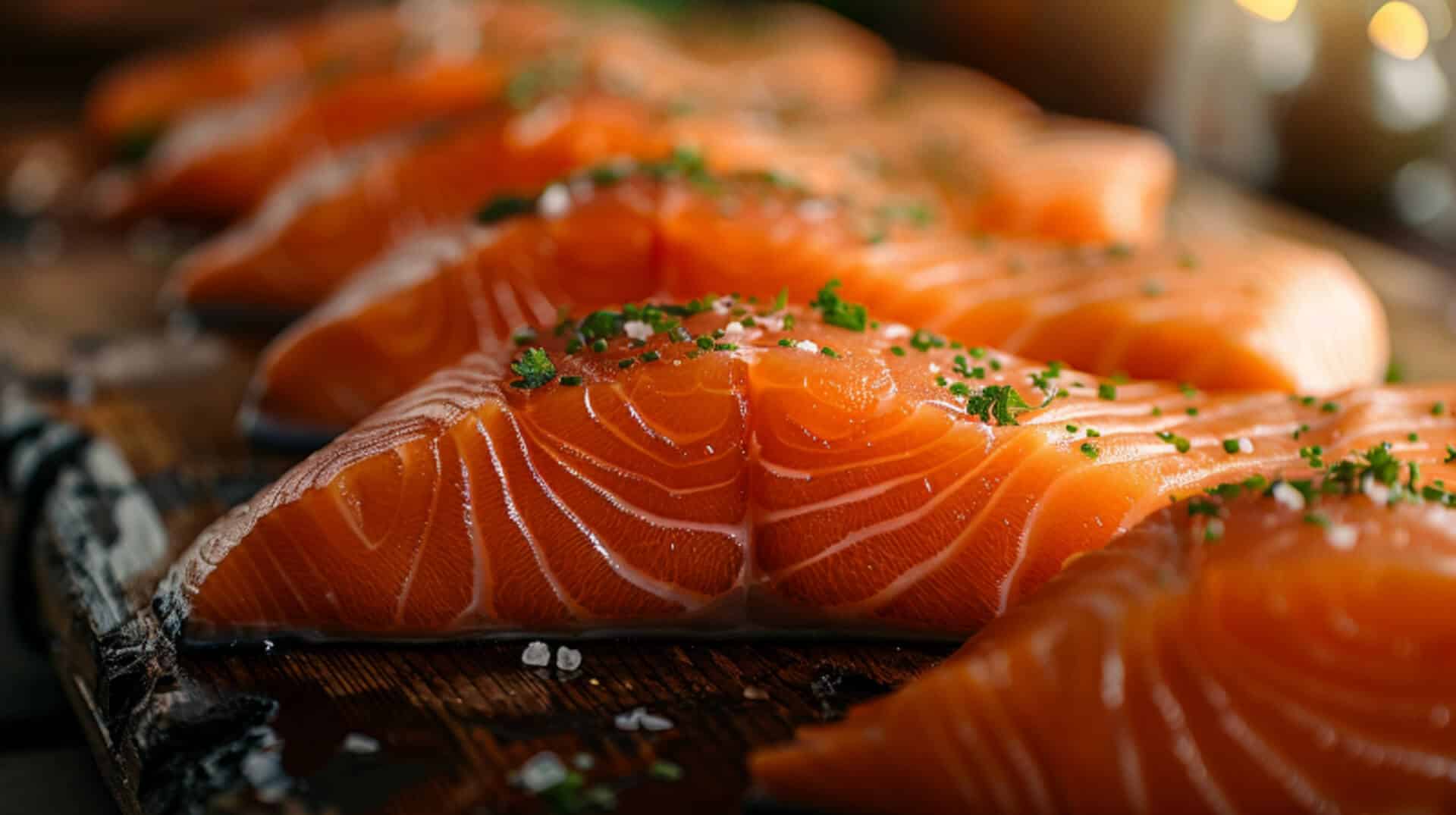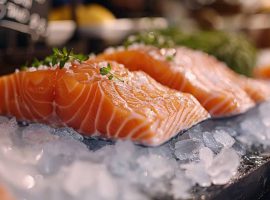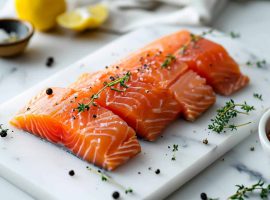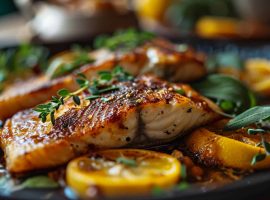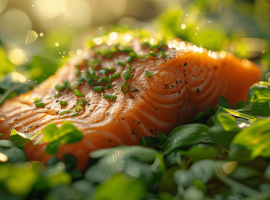The Essential Role of Vitamin E in Aquatic Nutrition
Vitamin E, a fat-soluble nutrient with potent antioxidant properties, is vital for maintaining immune function, protecting cell membranes from oxidative damage, and supporting overall health. Fish, as a dietary component, are significant contributors to Vitamin E intake, offering a natural source of this essential nutrient, particularly in the form of alpha-tocopherol.
Contribution of Fish to Vitamin E Intake
Fish are not only a rich source of high-quality protein and omega-3 fatty acids but also an excellent source of Vitamin E. This nutrient plays a synergistic role when combined with omega-3 fatty acids, enhancing the anti-inflammatory and cardiovascular benefits of a diet rich in seafood.
Synergy Between Vitamin E and Omega-3 Fatty Acids
The presence of Vitamin E is crucial in diets high in omega-3 fatty acids, as it helps prevent the oxidation of these unsaturated fats, thereby preserving their health benefits. Omega-3s, found abundantly in fish like Mackerel, Salmon, and Trout, are essential for brain health, joint mobility, and reducing triglycerides.
Aquatic Environment’s Influence on Vitamin E Content
The aquatic environment, including factors like water quality, diet of the fish, and exposure to sunlight, can significantly influence the Vitamin E content in fish. Wild-caught fish, for instance, tend to have a varied diet and natural habitat, which can contribute to their nutrient profile, including Vitamin E levels.
High Vitamin E Fish Varieties
When seeking fish rich in Vitamin E, certain species stand out. Atlantic salmon, Rainbow trout, and Mackerel are notable for their higher alpha-tocopherol content, the most active form of Vitamin E. The levels of Vitamin E can vary significantly across different fish types, influenced by factors such as diet and environment.
Benefits of Vitamin E-Rich Fish
Consuming fish with elevated levels of Vitamin E contributes to a host of health advantages. Vitamin E acts as a potent antioxidant, protecting cells from damage, supporting immune function, and promoting skin and eye health. Regular intake of these fish can be part of a strategy to mitigate the risk of chronic diseases.
Selecting Fish for Optimal Vitamin E
To ensure you’re choosing fish with the best Vitamin E content, look for those known for their high nutrient levels. Labels and certifications can also guide you towards sustainably sourced options, which often have superior nutritional profiles. When possible, opt for fresh or properly frozen fish to maintain the integrity of Vitamin E and other beneficial nutrients.
Preserving Vitamin E During Fish Preparation

Optimal Cooking Methods for Vitamin E Retention
To maximise the retention of Vitamin E in fish, steaming and baking are preferable. These methods apply gentle heat and minimise the loss of nutrients. Frying, especially at high temperatures, can degrade Vitamin E due to its sensitivity to oxidation and heat.
Nutrient Profile Impact by Cooking Techniques
The nutrient profile of fish, including Vitamin E content, is affected by the cooking method. Frying can lead to significant nutrient loss, while baking and grilling, if done correctly, can preserve the integrity of Vitamin E. It’s crucial to avoid overcooking, as prolonged exposure to heat can diminish the antioxidant properties of Vitamin E.
Cooking Techniques That Enhance Vitamin E
No cooking method increases the Vitamin E content in fish; however, pairing fish with Vitamin E-rich oils, like olive oil, during preparation can enhance the overall nutrient profile of the dish. Additionally, incorporating Vitamin E-rich sides or garnishes, such as almonds or sunflower seeds, can complement the meal.
Vitamin E-Friendly Fish Recipes
For Vitamin E-friendly recipes, consider dishes that require minimal cooking time and lower temperatures. Recipes that call for baking fish with a drizzle of olive oil, herbs, and a side of leafy greens can create a meal rich in Vitamin E while also being flavorful.
Incorporating Fish into Your Diet for Vitamin E
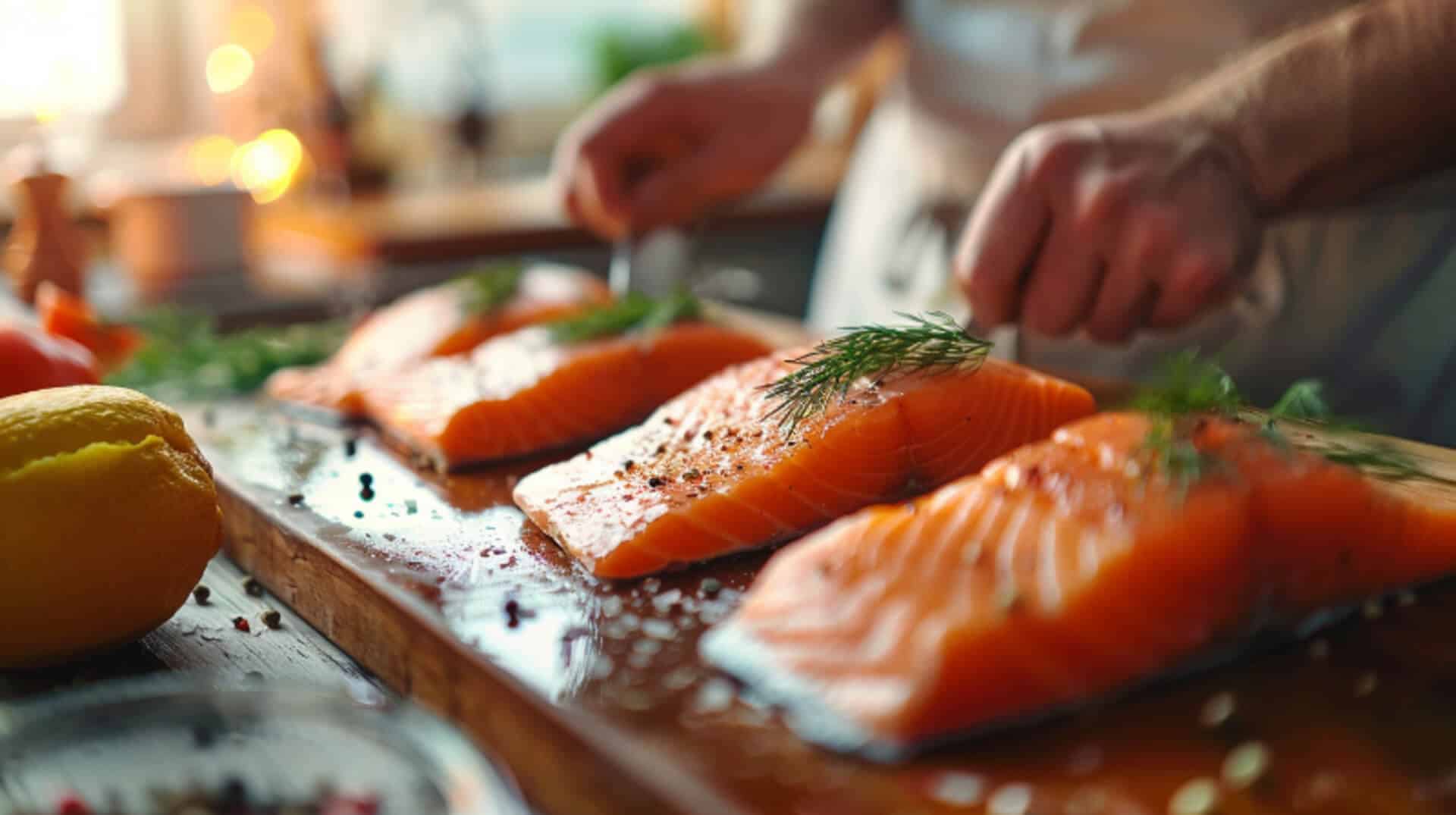
Incorporating fish into your diet can significantly contribute to your Vitamin E intake. Fish such as salmon, trout, and mackerel are not only rich in omega-3 fatty acids but also an excellent source of Vitamin E, particularly alpha-tocopherol.
Recommended Servings for Optimal Intake
The recommended servings of fish to meet Vitamin E needs vary depending on individual dietary requirements. However, consuming fish twice a week can help you reach the recommended dietary allowance for Vitamin E, as well as provide other essential nutrients.
Synergy of Nutrients in Fish
Fish is a powerhouse of nutrition, offering a synergy of nutrients that work together to enhance overall health. Omega-3 fatty acids, selenium, and Vitamin E in fish are a potent combination, with each component amplifying the health benefits of the others. This synergy supports cardiovascular health, cognitive function, and immune defence.
Fitting Fish into a Balanced Diet
Fish fits seamlessly into a balanced and varied diet, providing a lean source of protein and a suite of micronutrients. It can replace high-fat meats, contributing to a healthier lipid profile. For those looking to diversify their nutrient intake, fish is an adaptable and versatile choice, suitable for a range of culinary preferences.
Source Influence on Vitamin E Levels in Fish
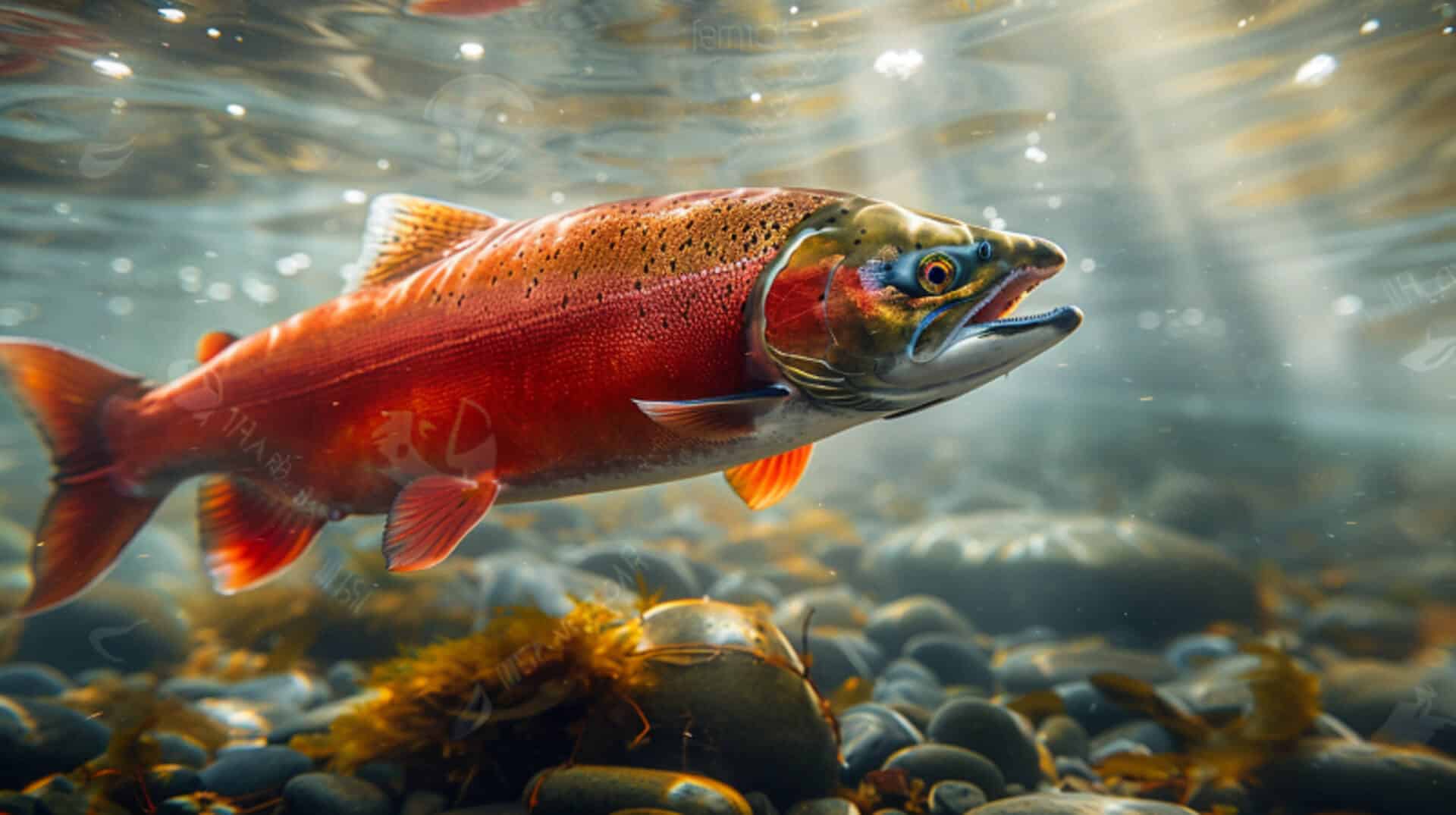
The Vitamin E content in fish can be influenced by whether the fish is wild-caught or farm-raised. Wild fish typically consume a natural diet that can lead to higher levels of nutrients, including Vitamin E. In contrast, farm-raised fish may have varying levels of Vitamin E depending on the feed they are given, which is often fortified to meet nutritional needs.
Nutritional Differences Between Wild and Farm-Raised Fish
Wild-caught fish often have a more diverse diet, leading to a potentially higher and more variable Vitamin E content. Farm-raised fish, however, can have a more consistent nutrient profile due to controlled diets. The farming environment, including water quality and feed composition, plays a significant role in the nutritional value of the fish.
Impact of Sustainability Practices on Nutritional Value
Sustainable fishing practices aim to maintain or improve the quality of the aquatic environment, which can positively affect the nutritional content of fish, including Vitamin E levels. Practices such as responsible feed sourcing and habitat conservation contribute to the overall health of fish populations.
Choosing Between Wild and Farm-Raised Fish
When selecting between wild and farm-raised fish, consumers should consider the fish’s origin, the sustainability of the fishing or farming practices, and any certifications indicating responsible sourcing. Labels may also provide information on nutrient content, helping you make an informed decision based on Vitamin E content and overall quality.
Mercury and Contaminant Risks in Fish Consumption
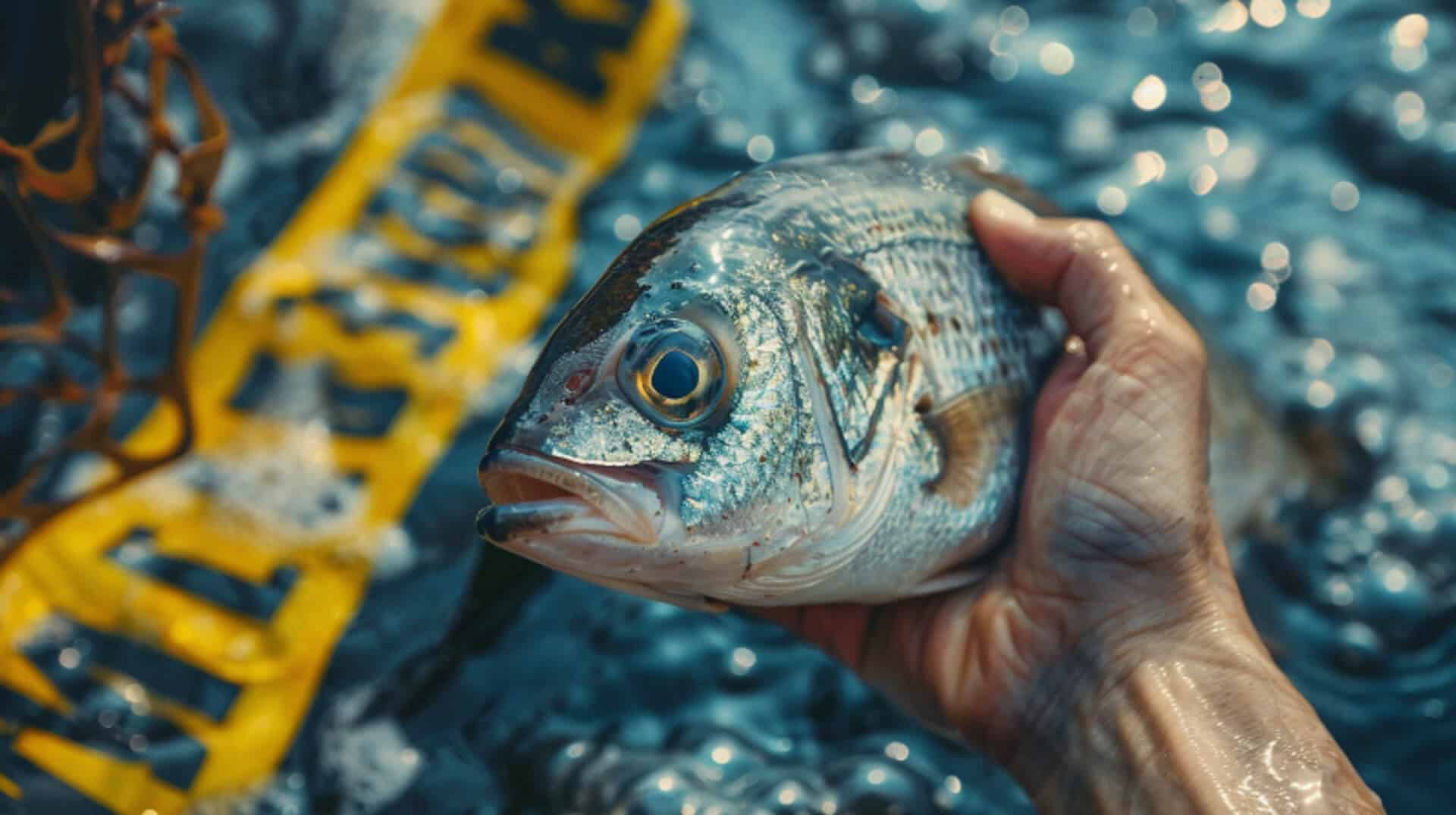
Correlation Between Mercury Levels and Vitamin E Benefits
While fish are a valuable source of Vitamin E, they can also contain mercury, a concern for many consumers. Mercury levels in fish do not diminish the nutritional value of Vitamin E, but high mercury intake can pose health risks that may overshadow the benefits of this essential nutrient.
Evaluating Risks and Benefits of Fish for Vitamin E
Consuming fish for Vitamin E must be balanced with the potential risks of mercury and other contaminants. It is essential to choose fish known for lower mercury levels, such as salmon and trout, and to consume a variety of fish to minimise exposure to contaminants.
Guidelines for Safe Fish Consumption
To balance the benefits and risks of fish consumption, adhere to established guidelines. The Environmental Protection Agency (EPA) and the Food and Drug Administration (FDA) provide recommendations on fish consumption, particularly for sensitive groups such as pregnant women and children.
Strategies for Reducing Contaminant Exposure
Consumers can reduce their exposure to contaminants in fish by following these strategies:
– Opt for smaller fish, which typically have lower mercury levels.
– Diversify fish choices to avoid accumulating contaminants from a single source.
– Check advisories for locally caught fish to ensure they are safe to consume.
Factors Influencing Vitamin E Absorption from Fish
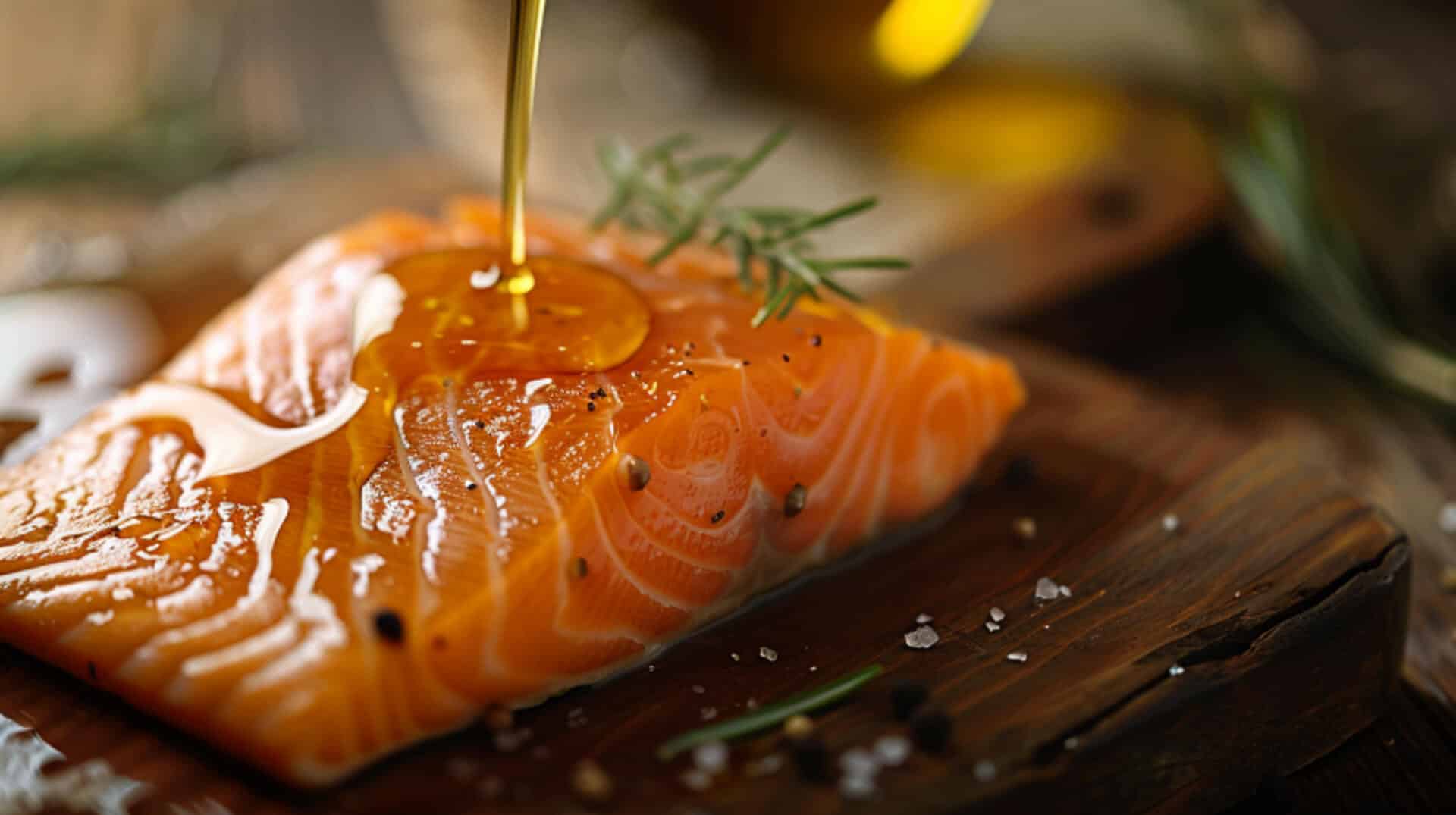
The body’s absorption of Vitamin E from fish is influenced by several factors, including the presence of dietary fats and the overall health of the digestive system. Fat-soluble vitamins like Vitamin E require dietary fats for proper absorption. Therefore, consuming fish with a healthy fat content, such as omega-3 fatty acids, can enhance Vitamin E uptake.
Dietary Fats and Vitamin E Uptake
Dietary fats present in fish play a crucial role in the absorption of Vitamin E. Omega-3 fatty acids, particularly EPA and DHA, found in fish like salmon and mackerel, aid in the emulsification and absorption of Vitamin E in the digestive tract.
Combinations to Improve Vitamin E Absorption
Combining fish with other foods that contain dietary fat, such as nuts or avocados, can further improve the absorption of Vitamin E. Additionally, a meal that includes a variety of fat-soluble vitamins, such as vitamins A and K, can promote efficient nutrient uptake.
Recognising Vitamin E Deficiency
Signs of Vitamin E deficiency include muscle weakness, coordination difficulties, and impaired vision. Regular consumption of Vitamin E-rich fish can help prevent these symptoms and contribute to maintaining adequate levels of this essential nutrient in the body.
Vitamin E’s Role in Chronic Disease Prevention
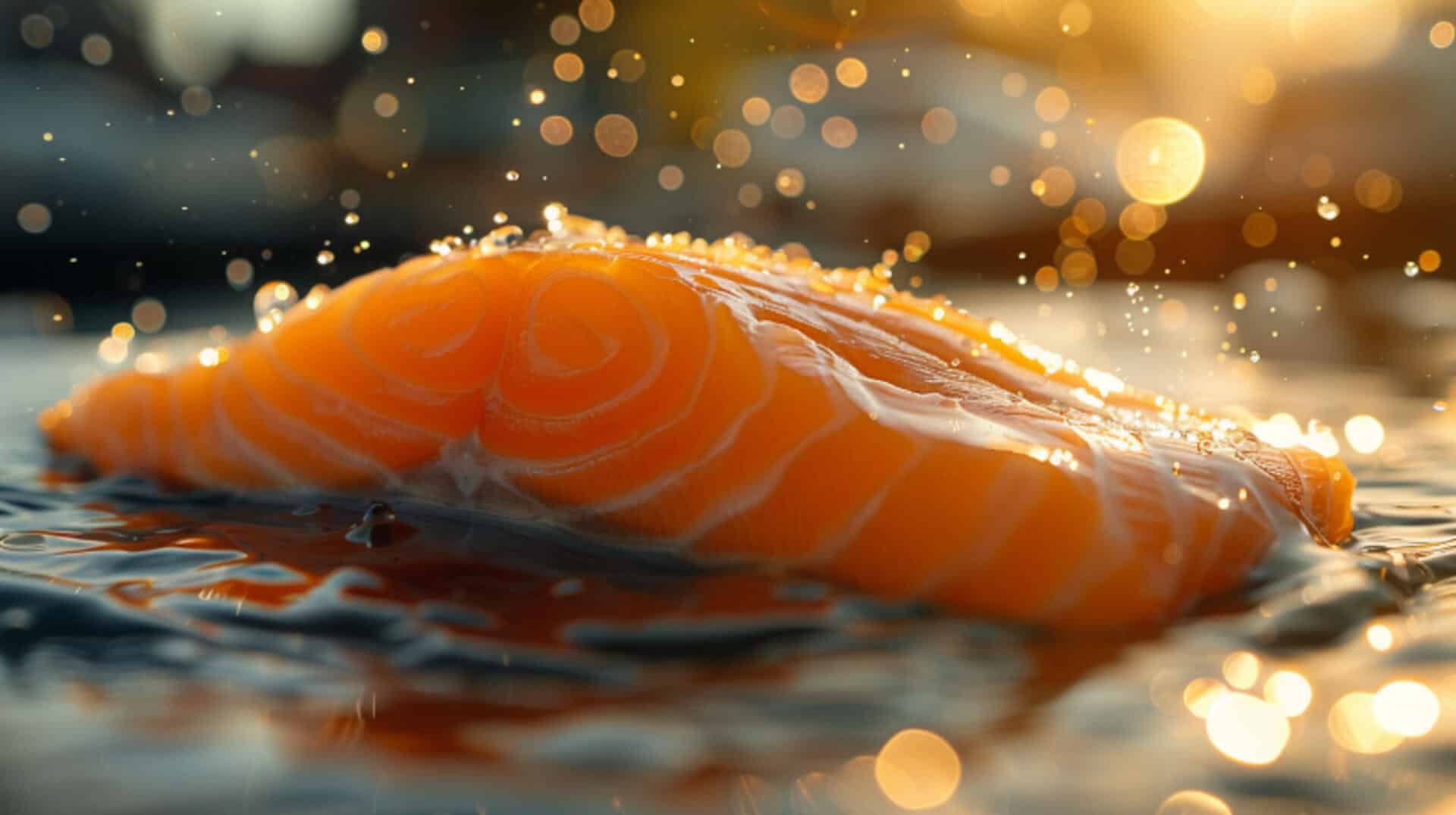
Cardiovascular Benefits of Vitamin E from Fish
Vitamin E, particularly from fish sources, is associated with a reduced risk of heart disease. Its antioxidant properties help prevent the oxidation of cholesterol, which is a key factor in the development of atherosclerosis. Regular consumption of Vitamin E-rich fish may contribute to the maintenance of a healthy cardiovascular system.
Autoimmune and Inflammatory Disease Mitigation
Vitamin E intake has been linked to a lower incidence of certain autoimmune diseases. The nutrient’s anti-inflammatory effects can modulate the immune response, potentially reducing the risk of conditions characterised by immune dysregulation.
Enhancing Vision and Sleep Quality
Consuming fish high in Vitamin E may support improved vision by protecting the eyes from oxidative stress and age-related macular degeneration. Additionally, the nutrient’s regulatory effect on immune function and inflammation can contribute to better sleep quality.
Mechanisms of Vitamin E in Health Promotion
Vitamin E serves as a lipid-soluble antioxidant, safeguarding cell membranes from oxidative damage. It also plays a role in immune function enhancement and anti-inflammatory processes, which are vital for preventing and mitigating chronic diseases.
Historical Contribution of Fish to Vitamin E Intake
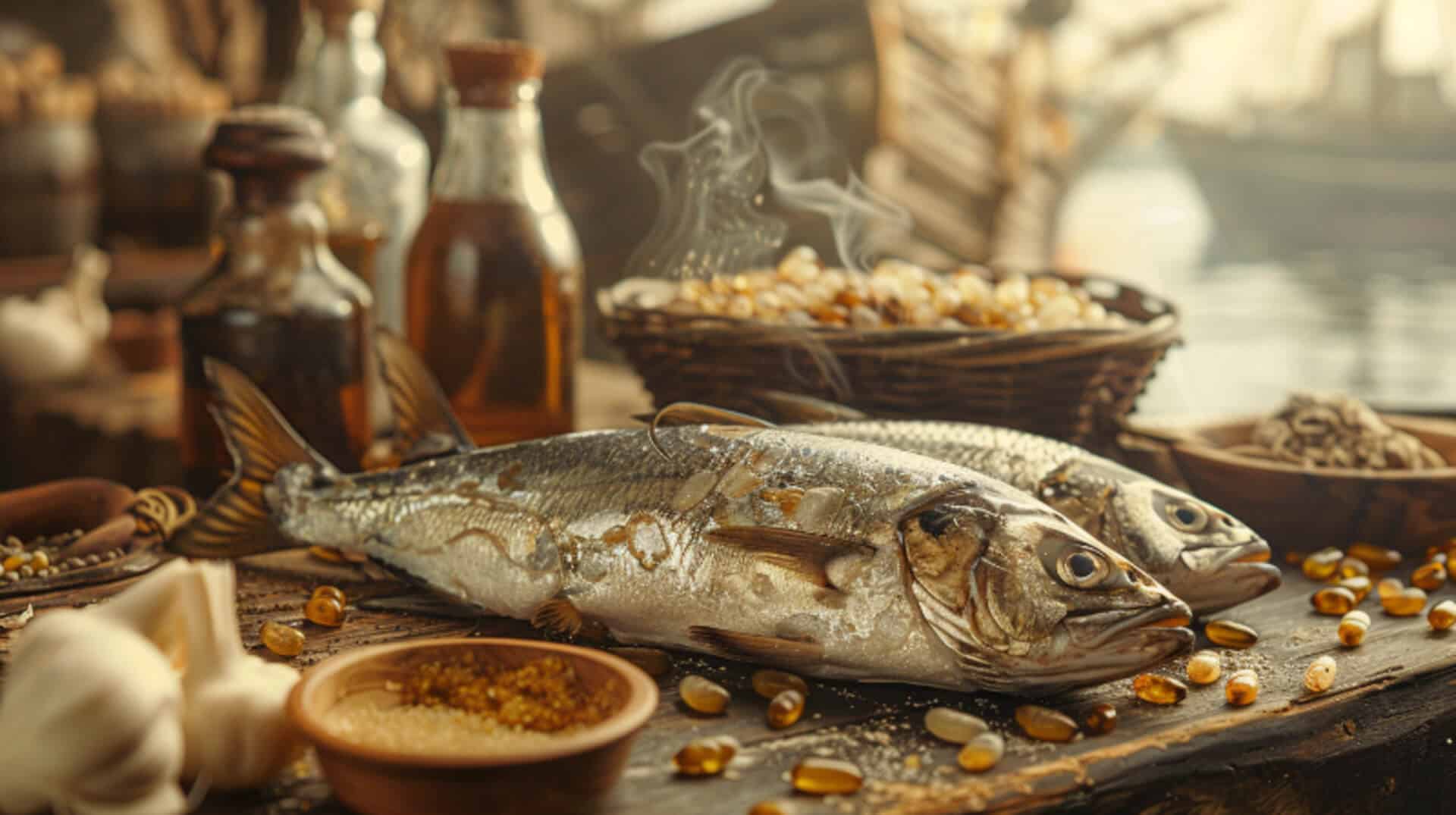
Throughout history, fish have been a crucial component of diets around the world, providing not only a source of high-quality protein but also essential nutrients like Vitamin E. Traditional diets, particularly in coastal regions, have relied on the natural abundance of fish as a dietary staple, inherently incorporating the antioxidant benefits of Vitamin E into daily nutrition.
Cultural Significance of Fish in Global Diets
Fish hold a place of cultural significance in various diets across the globe. In many societies, fish are not only a food source but also a symbol of prosperity and health. The consumption of fish, rich in Vitamin E, has been interwoven with cultural practices and festivities, reflecting its valued status in human nutrition.
Vitamin E Preservation in Modern Aquaculture
Modern aquaculture faces the challenge of maintaining the Vitamin E content in fish. Through advancements in fish feed formulation, which often includes Vitamin E supplementation, aquaculture aims to preserve the nutrient levels that are naturally found in wild fish.
Ensuring Nutrient-Rich Fish in Contemporary Diets
Today’s diets pose unique challenges in ensuring access to nutrient-rich fish. Aquaculture advancements, such as improved feed and sustainable farming practices, strive to meet these challenges. These efforts are crucial for providing consistent levels of Vitamin E and other nutrients essential for maintaining public health.
Incorporating Vitamin E-Rich Fish into Meals
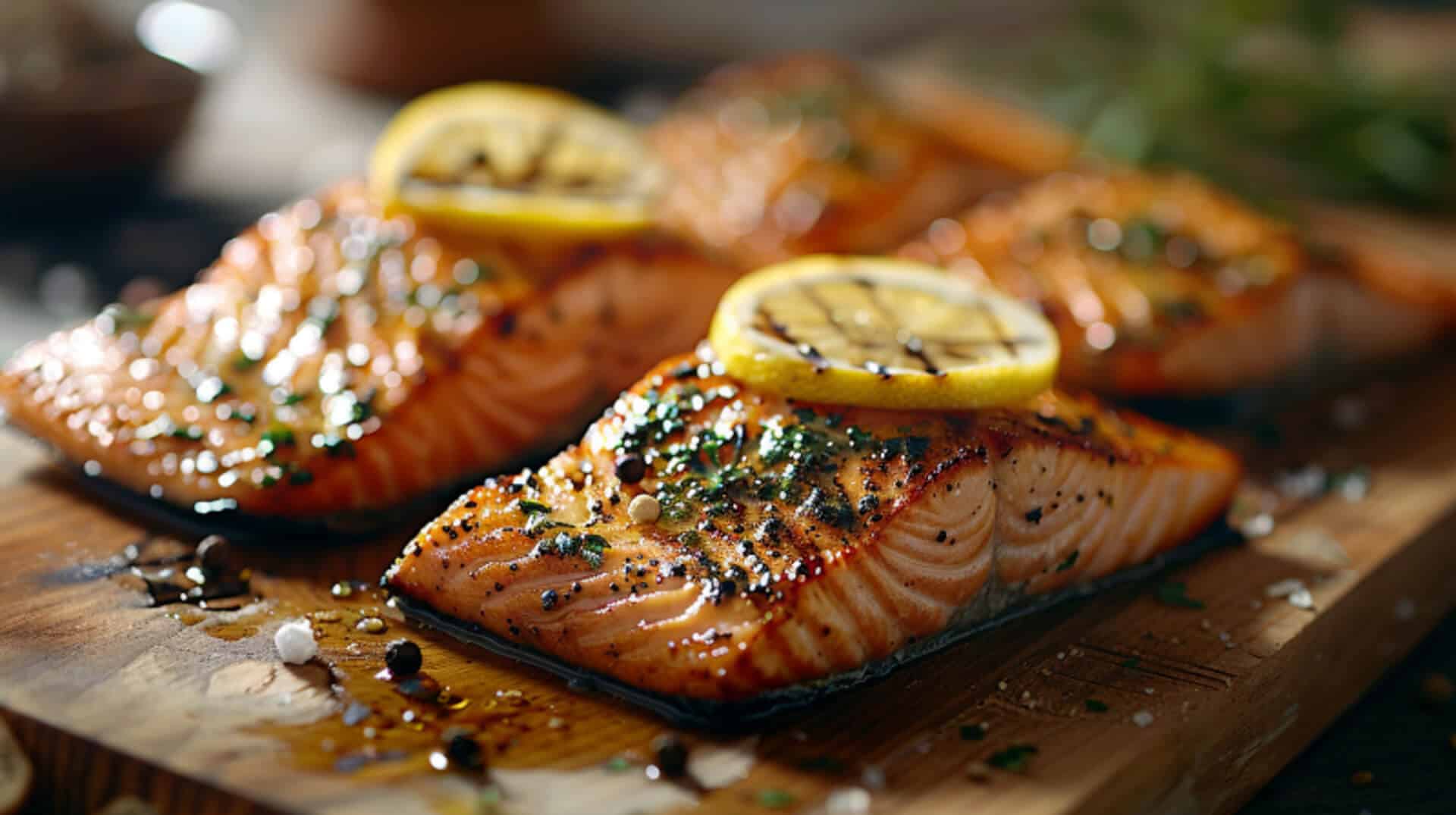
Incorporating fish high in Vitamin E into your diet can be both simple and delicious. For a start, consider grilling or baking fish like salmon, trout, or mackerel, which are known for their higher Vitamin E content. These methods preserve the nutrient’s integrity while providing a delectable meal.
Adapting Fish Dishes for Dietary Restrictions
For those with dietary restrictions, the versatility of fish allows for various preparation methods that can align with your needs. For example, poaching fish in a broth can be a low-sodium option that retains the beneficial Vitamin E.
Creative Culinary Ideas for Vitamin E Intake
Enhance your culinary repertoire with dishes like salmon avocado wraps or trout almondine to boost your Vitamin E intake. These dishes combine the health benefits of fish with other Vitamin E-rich ingredients, creating balanced and nutritious meals.
Accessing High-Quality Fish with Frozen Fish Direct
Frozen Fish Direct” offers a convenient solution for accessing high-quality, Vitamin E-rich fish. Their selection includes a variety of frozen-at-sea options, ensuring nutrient retention and providing you with a reliable source of this essential nutrient year-round.
Supplementing Your Diet: Fish vs. Vitamin E Pills
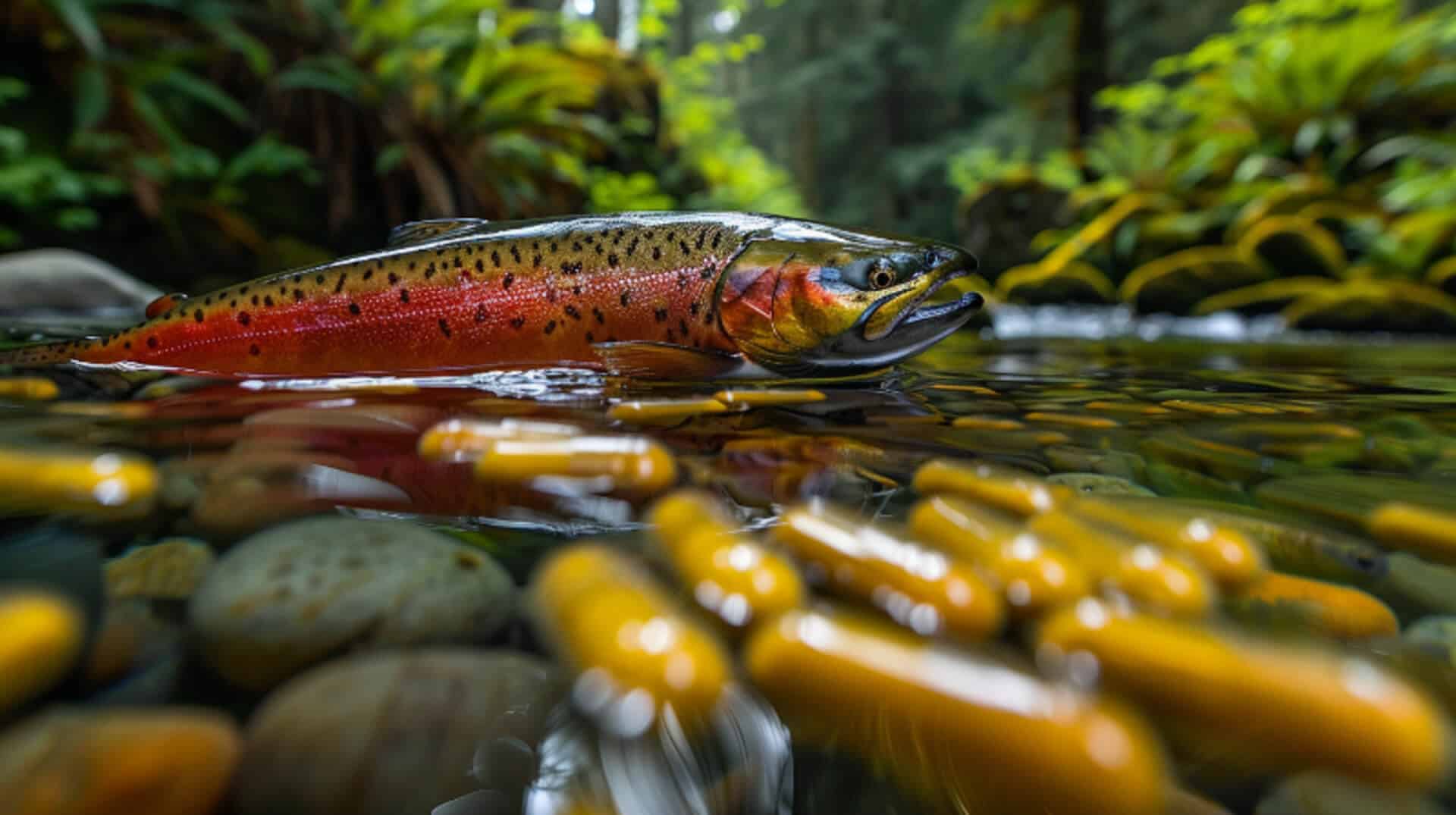
When Supplements Complement a Fish-Rich Diet
Supplements may become necessary when dietary restrictions, health conditions, or specific nutritional deficiencies make it challenging to obtain sufficient Vitamin E from fish alone. For individuals who do not consume fish due to allergies, personal preferences, or environmental concerns, high-quality Vitamin E supplements can help fill the nutritional gap.
Comparing Fish-Derived and Supplemental Vitamin E
The health benefits of obtaining Vitamin E from fish include the presence of other synergistic nutrients, such as omega-3 fatty acids, which may enhance the nutrient’s bioavailability and efficacy. Conversely, supplements provide a concentrated and controlled dose of Vitamin E, which can be beneficial for those with increased requirements or absorption issues.
Identifying High-Quality Vitamin E Supplements
When selecting Vitamin E supplements, consumers should look for products that specify the form of Vitamin E, preferably natural alpha-tocopherol, and that provide information on the source. Certifications and third-party testing can also be indicators of quality and purity.
Natural Vitamin E Alternatives with Frozen Fish Direct
Frozen Fish Direct” offers a natural alternative to Vitamin E supplementation by providing a variety of Vitamin E-rich fish options. Their frozen-at-sea process ensures nutrient retention, offering consumers the convenience of a consistent and high-quality source of dietary Vitamin E.
Key Takeaways for Vitamin E Intake from Fish

For consumers aiming to enhance their Vitamin E intake through diet, it is essential to recognise the value of fish as a nutrient-dense food. Fish such as salmon, mackerel, and trout are not only rich in omega-3 fatty acids but are also excellent sources of Vitamin E, particularly the beneficial alpha-tocopherol form.
Informed Fish Selection for Healthier Outcomes
Making informed choices about fish selection can significantly impact health outcomes. Opting for fish known for their high Vitamin E content and understanding the influence of cooking methods on nutrient retention are pivotal steps in maximising the benefits of fish consumption.
Future Considerations for Vitamin E and Fish Consumption
Looking ahead, considerations for Vitamin E intake from fish should include the sustainability of fishing practices, the impact of environmental factors on nutrient content, and ongoing research into the health benefits of Vitamin E.
“Frozen Fish Direct” and Healthy Dietary Choices
“Frozen Fish Direct” supports consumers in making healthy dietary choices by providing access to a variety of fish options. Their commitment to quality ensures that the fish retain their nutrient content, including Vitamin E, offering a convenient and reliable source for those looking to enrich their diet with this essential nutrient.
